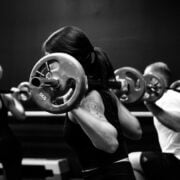
Unleash Your Inner Rider: The Ultimate Equestrian Workout Routine
Equestrian workouts, also known as horseback riding, offer a unique and enjoyable way to improve physical fitness, mental health, and overall well-being. Whether you are a beginner or an experienced rider, engaging in equestrian workouts can provide numerous benefits for both your body and mind.
One of the key benefits of equestrian workouts is the improvement of physical fitness. Horseback riding requires the use of various muscle groups, including the core, legs, and upper body. As a result, riders develop strength, endurance, and flexibility. Additionally, riding a horse can also improve cardiovascular fitness as it involves continuous movement and coordination.
In addition to physical fitness, equestrian workouts can also have a positive impact on mental health. Spending time with horses and being in nature can reduce stress levels and promote relaxation. The rhythmic motion of riding can also have a calming effect on the mind, making it an excellent activity for those looking to reduce anxiety or improve their overall mental well-being.
Key Takeaways
- Equestrian workouts offer numerous benefits for riders, including improved balance, posture, and cardiovascular health.
- Proper form and technique are crucial for effective and safe equestrian exercises.
- Warm-up routines are essential for preparing the body for the physical demands of riding.
- Core strength and stability exercises can help riders maintain proper posture and control in the saddle.
- Leg and lower body workouts can improve balance and control while riding.
The Importance of Proper Form and Technique in Equestrian Exercises
Proper form and technique are crucial in equestrian workouts to ensure both safety and optimal performance. Incorrect form can lead to injuries and negatively impact your riding abilities. It is important to understand the correct posture, position, and movements required for each exercise.
When riding a horse, maintaining proper posture is essential. This includes keeping your back straight, shoulders relaxed, and head up. Incorrect posture can lead to back pain and discomfort while riding. It can also affect your balance and control in the saddle.
In addition to posture, proper technique is important for executing movements correctly and efficiently. For example, using the correct leg aids when asking the horse to move forward or change direction is crucial for effective communication between rider and horse. Incorrect leg aids can confuse the horse and lead to miscommunication or even accidents.
Warm-up Routines for Equestrian Workouts
Before engaging in any equestrian workout, it is important to warm up properly to prepare your body for the physical demands of riding. A warm-up routine can help prevent injuries and improve performance by increasing blood flow to the muscles and joints, loosening up the body, and enhancing flexibility.
Some suitable warm-up exercises for equestrian workouts include:
1. Jogging or brisk walking: This helps increase heart rate and warm up the entire body.
2. Dynamic stretches: These involve moving parts of your body through a full range of motion. Examples include arm circles, leg swings, and torso twists.
3. Hip openers: These exercises help loosen up the hips, which are crucial for maintaining balance and stability while riding. Examples include hip circles and lunges.
4. Shoulder rolls: These help loosen up the shoulders and upper back, which are important for maintaining proper posture while riding.
By incorporating a warm-up routine into your equestrian workouts, you can reduce the risk of injury and improve your overall performance in the saddle.
Core Strength and Stability Exercises for Equestrian Riders
| Exercise | Description | Benefits |
|---|---|---|
| Plank | Hold a push-up position with your arms straight and your body in a straight line from head to heels. | Strengthens the core, improves balance and stability, and helps prevent lower back pain. |
| Side Plank | Hold a plank position on one arm with your body in a straight line from head to heels. | Strengthens the obliques, improves balance and stability, and helps prevent lower back pain. |
| Bird Dog | Get on your hands and knees, then extend one arm and the opposite leg while keeping your back straight. | Strengthens the core, improves balance and stability, and helps prevent lower back pain. |
| Dead Bug | Lie on your back with your arms and legs in the air, then lower one arm and the opposite leg while keeping your back flat on the ground. | Strengthens the core, improves coordination, and helps prevent lower back pain. |
| Bridge | Lie on your back with your knees bent and your feet flat on the ground, then lift your hips up towards the ceiling. | Strengthens the glutes, hamstrings, and lower back, improves posture, and helps prevent lower back pain. |
Core strength and stability are essential for equestrian riders as they provide a solid foundation for balance and control in the saddle. A strong core helps riders maintain proper posture, absorb the horse’s movements, and execute precise movements with ease.
Some beneficial core exercises for equestrian riders include:
1. Planks: This exercise targets the entire core, including the abdominal muscles, lower back, and obliques. Start by holding a plank position on your forearms or hands for 30 seconds to a minute, gradually increasing the duration as you get stronger.
2. Russian twists: This exercise targets the obliques and improves rotational stability. Sit on the ground with your knees bent and feet lifted off the floor. Hold a weight or medicine ball in front of your chest and twist your torso from side to side, touching the weight to the ground on each side.
3. Leg raises: This exercise targets the lower abdominal muscles. Lie on your back with your legs straight and lift them off the ground, keeping them together. Lower them back down without touching the ground and repeat.
By incorporating core strength and stability exercises into your equestrian workouts, you can improve your balance, control, and overall riding performance.
Leg and Lower Body Workouts for Improved Balance and Control
Strong legs and lower body muscles are essential for maintaining balance and control in the saddle. The legs provide stability and support while riding, allowing riders to communicate effectively with their horses and execute precise movements.
Some leg and lower body exercises that are suitable for equestrian riders include:
1. Squats: This exercise targets the quadriceps, hamstrings, and glutes. Stand with your feet shoulder-width apart, lower your body as if sitting back into a chair, and then return to a standing position. Repeat for several repetitions.
2. Lunges: This exercise targets the quadriceps, hamstrings, glutes, and calves. Step forward with one foot and lower your body until both knees are bent at a 90-degree angle. Push through the front heel to return to a standing position. Repeat on the other side.
3. Calf raises: This exercise targets the calf muscles. Stand with your feet hip-width apart and rise up onto your toes, then lower back down. Repeat for several repetitions.
By incorporating leg and lower body workouts into your equestrian routine, you can improve your balance, stability, and overall riding performance.
Upper Body Workouts for Better Posture and Control of the Reins
The upper body plays a crucial role in maintaining proper posture and control of the reins while riding. Strong upper body muscles help riders maintain a steady contact with the horse’s mouth, execute precise rein aids, and maintain a balanced position in the saddle.
Some upper body exercises that are beneficial for equestrian riders include:
1. Push-ups: This exercise targets the chest, shoulders, and triceps. Start in a plank position with your hands slightly wider than shoulder-width apart. Lower your body until your chest nearly touches the ground, then push back up to the starting position. Repeat for several repetitions.
2. Rows: This exercise targets the upper back muscles. Stand with your feet hip-width apart and hold a dumbbell or resistance band in each hand. Bend forward at the hips, keeping your back straight, and pull the weights or bands towards your chest, squeezing your shoulder blades together. Lower back down and repeat for several repetitions.
3. Shoulder presses: This exercise targets the shoulders and upper back muscles. Stand with your feet hip-width apart and hold a dumbbell in each hand at shoulder height. Press the weights overhead until your arms are fully extended, then lower back down to shoulder height. Repeat for several repetitions.
By incorporating upper body workouts into your equestrian routine, you can improve your posture, control of the reins, and overall riding performance.
Cardiovascular Workouts for Endurance and Stamina in the Saddle
Cardiovascular workouts are important for equestrian riders as they improve endurance and stamina in the saddle. Riding can be physically demanding, requiring riders to maintain a steady pace and perform various movements for extended periods of time.
Some cardiovascular exercises that are suitable for equestrian riders include:
1. Running or jogging: This is a great way to improve cardiovascular fitness and build endurance. Start with shorter distances or durations and gradually increase as you get fitter.
2. Cycling: This low-impact exercise is excellent for cardiovascular fitness and can be done outdoors or on a stationary bike.
3. High-intensity interval training (HIIT): This involves alternating between periods of high-intensity exercise and short recovery periods. HIIT workouts can be done with various exercises such as running, cycling, or jumping jacks.
By incorporating cardiovascular workouts into your equestrian routine, you can improve your endurance, stamina, and overall riding performance.
Stretching and Flexibility Exercises for Equestrian Riders
Stretching and flexibility are important for equestrian riders as they help improve range of motion, prevent injuries, and enhance overall performance. Stretching exercises can help lengthen muscles, improve joint mobility, and reduce muscle soreness.
Some stretching and flexibility exercises that are beneficial for equestrian riders include:
1. Hamstring stretches: Sit on the ground with one leg extended in front of you and the other leg bent with the foot against the inner thigh. Reach forward towards your toes, keeping your back straight. Hold for 30 seconds to a minute and repeat on the other side.
2. Hip flexor stretches: Kneel on one knee with the other foot in front of you, making sure both knees are at a 90-degree angle. Lean forward into the stretch, feeling a stretch in the front of the hip of the kneeling leg. Hold for 30 seconds to a minute and repeat on the other side.
3. Shoulder stretches: Stand tall with your feet shoulder-width apart and reach one arm across your chest, using the other arm to gently pull it closer to your body. Hold for 30 seconds to a minute and repeat on the other side.
By incorporating stretching and flexibility exercises into your equestrian routine, you can improve your range of motion, prevent injuries, and enhance your overall riding performance.
Incorporating Resistance Training into Your Equestrian Workout Routine
Resistance training is beneficial for equestrian riders as it helps build strength, power, and muscular endurance. By incorporating resistance training exercises into your equestrian workout routine, you can improve your overall riding performance and reduce the risk of injuries.
Some resistance training exercises that are suitable for equestrian riders include:
1. Squats with weights: Hold a dumbbell or kettlebell in front of your chest while performing squats to increase the intensity and challenge your leg muscles.
2. Deadlifts: This exercise targets the glutes, hamstrings, and lower back. Stand with your feet hip-width apart and hold a barbell or dumbbells in front of your thighs. Bend forward at the hips, keeping your back straight, and lower the weights towards the ground. Push through your heels to return to a standing position.
3. Lat pulldowns: This exercise targets the upper back muscles. Sit at a lat pulldown machine with your feet flat on the ground and grasp the bar with an overhand grip. Pull the bar down towards your chest, squeezing your shoulder blades together, then slowly release back up to the starting position.
By incorporating resistance training exercises into your equestrian routine, you can improve your strength, power, and overall riding performance.
Tips for Staying Motivated and Consistent with Your Equestrian Workouts
Staying motivated and consistent with your equestrian workouts is important for achieving your fitness goals and improving your riding performance. Here are some tips to help you stay on track:
1. Set specific goals: Whether it’s improving your balance, increasing your endurance, or mastering a new riding skill, setting specific goals can help keep you motivated and focused.
2. Track your progress: Keep a record of your workouts, noting any improvements or achievements along the way. This can help you stay motivated by seeing how far you’ve come.
3. Mix it up: Varying your workouts can help prevent boredom and keep you engaged. Try different exercises, ride different horses, or explore new riding disciplines to keep things interesting.
4. Find a workout buddy: Exercising with a friend or joining a group class can provide accountability and make your workouts more enjoyable.
5. Reward yourself: Celebrate your achievements and milestones with small rewards, such as treating yourself to a new piece of riding gear or scheduling a relaxing massage.
By staying motivated and consistent with your equestrian workouts, you can reap the benefits of improved physical fitness, mental health, and overall well-being.
Equestrian workouts offer numerous benefits for both the body and mind. From improving physical fitness and mental health to enhancing riding performance, engaging in equestrian exercises can have a positive impact on your overall well-being.
Proper form and technique are crucial in equestrian workouts to ensure safety and optimal performance. Warm-up routines, core strength and stability exercises, leg and lower body workouts, upper body workouts, cardiovascular workouts, stretching and flexibility exercises, and resistance training can all be incorporated into your equestrian routine to improve your riding abilities.
By staying motivated and consistent with your equestrian workouts, setting goals, tracking progress, and finding enjoyment in the process, you can make the most of your equestrian journey and achieve your fitness goals. So saddle up, get moving, and experience the many benefits that equestrian workouts have to offer.
If you’re looking to enhance your equestrian workout routine, you won’t want to miss out on this informative article from Wave Magnets. They have a fantastic piece on their website that dives into the benefits of using magnetic therapy for equestrians. Discover how incorporating magnetic therapy into your training can help improve circulation, reduce inflammation, and promote overall well-being for both you and your horse. Check out the article here to learn more about this fascinating approach to equestrian fitness.
FAQs
What is an equestrian workout?
An equestrian workout is a type of exercise routine designed to improve the rider’s strength, flexibility, and balance while riding a horse.
What are the benefits of an equestrian workout?
An equestrian workout can improve the rider’s posture, core strength, and overall fitness. It can also help the rider develop a better connection with their horse and improve their riding skills.
What exercises are included in an equestrian workout?
An equestrian workout may include exercises such as squats, lunges, planks, and yoga poses. It may also involve riding exercises such as trotting, cantering, and jumping.
Do I need to have experience with horses to do an equestrian workout?
No, you do not need to have experience with horses to do an equestrian workout. However, it is recommended that you take lessons from a qualified instructor to learn proper riding techniques and safety precautions.
Can an equestrian workout be done without a horse?
Yes, some exercises in an equestrian workout can be done without a horse, such as yoga poses and strength training exercises. However, riding exercises require a horse and a safe riding environment.
Is an equestrian workout suitable for all ages?
An equestrian workout can be suitable for all ages, but it is important to consult with a doctor before starting any new exercise routine, especially if you have any health concerns or medical conditions.

















